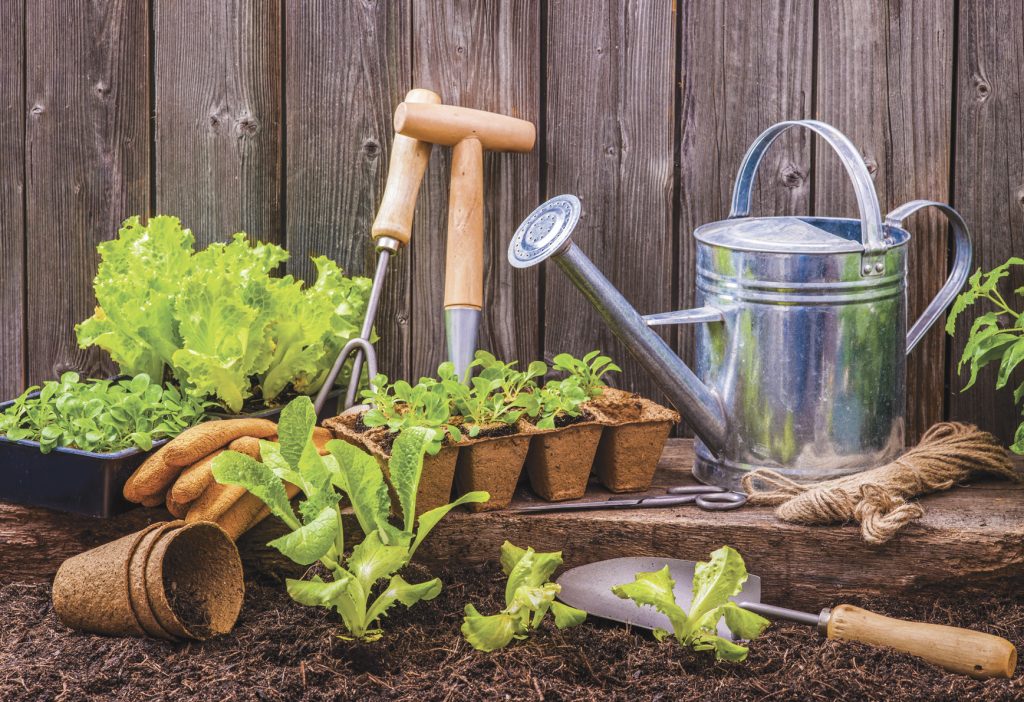Table of Contents
Planting a Garden
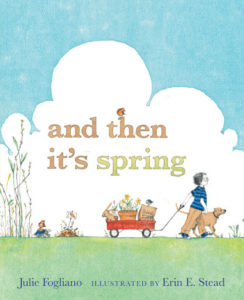
|
“First you have brown, all around you have brown…then there are seeds, and a wish for rain.” So begins Julie Fogliano’s lovely and irresistibly hopeful And Then It’s Spring (Roaring Brook Press, 2012) in which a little boy plants a garden and watches the world turn green. For ages 3-8. |
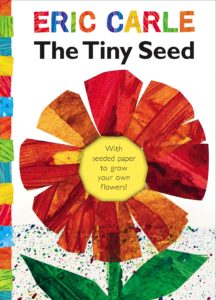 |
The life of a seed, as shown in Eric Carle’s The Tiny Seed (Little Simon, 2009) is far from easy. Many seeds don’t make it, but our hero, for whom conditions are just right, grows into a spectacular flower. For ages 3-7. |
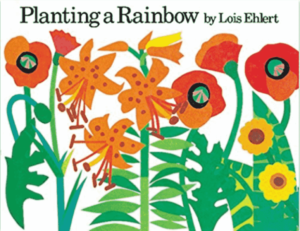
|
Lois Ehlert’s gorgeously colorful Planting a Rainbow (Sandpiper, 1992) is a simple account of planting a flower garden. For ages 3-7. |
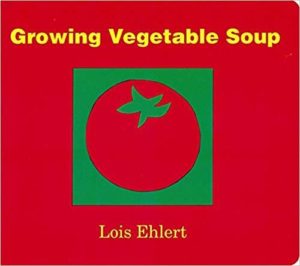
|
Also see Ehlert’s Growing Vegetable Soup (Sandpiper, 1990), vegetable growing for the very young, complete with a recipe for vegetable soup. |
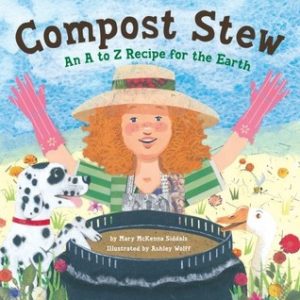
|
Mary McKenna Siddals’s Compost Stew (Tricycle Press) is a catchy and alphabetical rhyming account of how to make compost (“Apple cores/Bananas, bruised/Coffee grounds with filters, used”). For ages 3-7. |
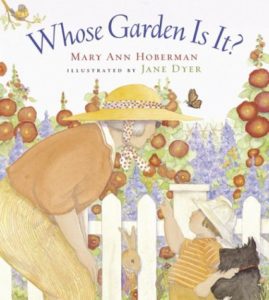
|
In Mary Ann Hoberman’s rhyming picture-book Whose Garden Is It? (Harcourt Children’s Books, 2004), there’s no simple answer to the question: the gardener thinks it’s his – but the rabbit, woodchuck, bird, and bee all make claims, as do the seeds, rain, and sun. For ages 3-7. |
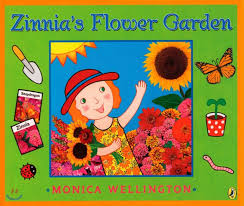
|
In Monica Wellington’s Zinnia’s Flower Garden (Puffin, 2007), illustrated with bright cartoons melded with photos of real flowers, orange-haired Zinnia, with the help of her striped cat and spotted puppy, plants a flower garden. For ages 3-7. |
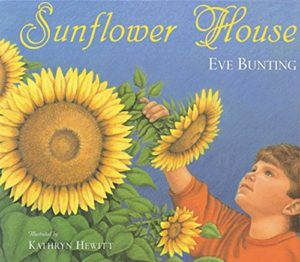
|
In Eve Bunting’s Sunflower House (Sandpiper, 1999), a small boy and his father plant a circle of sunflower seeds that, when grown, form a towering “sunflower house.” The boy and his friends play in their sunflower hideaway all summer long – and then in the fall, as the flowers begin to die, collect seeds to plant next year. For ages 3-7. |
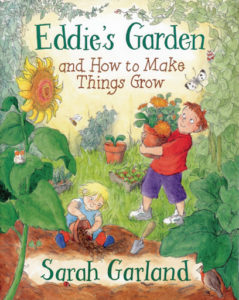
|
In Sarah Garland’s Eddie’s Garden and How to Make Things Grow (Frances Lincoln Children’s Books, 2009), Eddie, his mother, and his baby sister Lily plant a wonderful vegetable garden complete with bean-vine playhouse. At the end of the summer, they celebrate their harvest with a yummy vegetable picnic. Included are instructions for growing all of Eddie’s garden plants. For ages 4-8. |
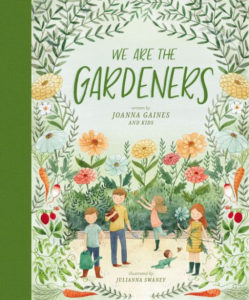
|
Joanna Gaines’s We Are the Gardeners (Thomas Nelson, 2019) is the charmingly illustrated story of the Gaines family garden, which didn’t always go quite as planned. For ages 4-8. |
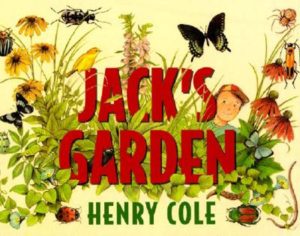
|
Jack’s Garden (Greenwillow Books, 1997) by Henry Cole is a cumulative tale in the style of “This is the house that Jack built” with a science twist, tracing Jack’s garden from bare ground to harvest. Beautifully detailed illustrations include borders filled with labeled depictions of garden tools, seeds, insects, birds, and flowers. For ages 4-8. |
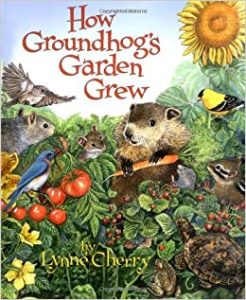
|
In Lynne Cherry’s How Groundhog’s Garden Grew (Blue Sky Press, 2003), Little Groundhog has been pinching vegetables from his neighbors’ gardens, so the exasperated Squirrel shows him how to plant a garden of his own. Groundhog is so successful that he ends up throwing a neighborhood Thanksgiving feast. The story is supplemented by realistic and detailed drawings of seeds, plants, and vegetables. For ages 4-8. |
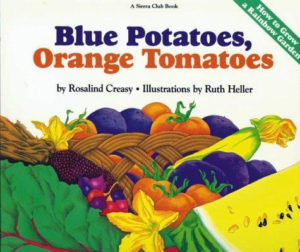
|
Rosalind Creasey’s Blue Potatoes, Orange Tomatoes (Sierra Club Books for Children, 2000) has instructions for growing a “rainbow garden” filled with wild-colored vegetables, among them not only the title blue potatoes and orange tomatoes, but purple string beans, yellow watermelon, and red corn. For ages 5-9. |
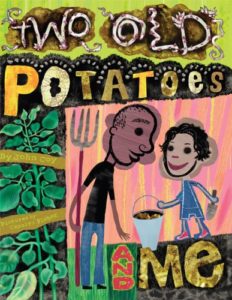
|
In John Coy’s Two Old Potatoes and Me (Dragonfly Books, 2009), a little girl finds a pair of old sprouting potatoes (“GROSS”) and is about to toss them in the trash when her father points out that they can plant them and grow a whole new potato crop. And so they do, with a little help from Grandpa. The book is illustrated with gorgeous graphics by Carolyn Fisher. Included is a recipe for mashed potatoes. For ages 5-9. |
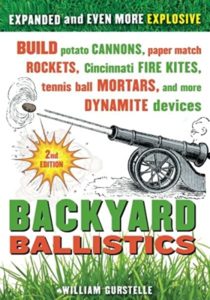
|
An awesome use for potatoes can be found in William Gurstelle’s Backyard Ballistics (Chicago Review Press, 2001), a collection of 13 exciting engineering projects, among them a match-powered rocket, a fire kite, and a potato cannon. Adored by children. Just use common sense. |
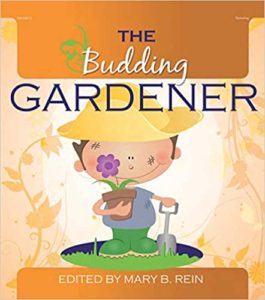
|
Mary B. Rein’s The Budding Gardener (Gryphon House, 2011) is a 64-page collection of gardening activities for children, among them planting a Three Sisters garden, sprouting plants from kitchen leftovers, and making a homemade greenhouse and worm farm. For ages 3 and up. |
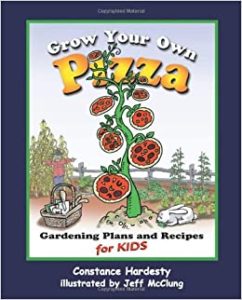
|
Constance Hardesty’s Grow Your Own Pizza (Fulcrum Publishing, 2000) is a collection of garden plans and recipes for kids, categorized as Easy, Medium, or Advanced. For example, kids can grow not only pizza gardens but spring salad bowl gardens, salsa gardens, corn crop circles, and a Three Sisters Native American Garden. For ages 8 and up. |
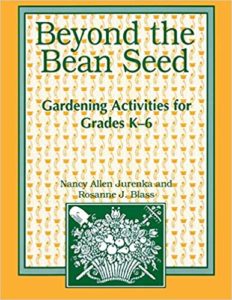
|
Beyond the Bean Seed: Gardening Activities for Grades K-6 by Nancy Allen Jurenka and Rosanne J. Blass (Libraries Unlimited, 1996) is a compendium of garden-related books, projects, recipes, games, and writing and art activities. Included are instructions for planting bird, butterfly, bee, butterfly, windowsill, container, and clock gardens; and recipes for potpourri, fruit leathers, garden vegetable soup, and mashed-potato candy. Projects include making a terrarium, a seed chart, a scarecrow, seed markers, flower puppets, and a blueberry-dyed stuffed bear. Featured books are older and some are out of print – check your library – but this is still a great idea-packed resource. |
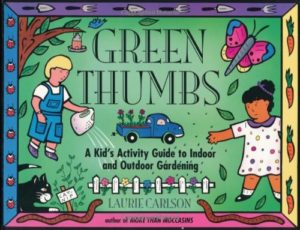
|
Laurie Carlson’s Green Thumbs: A Kid’s Activity Guide to Indoor and Outdoor Gardening (Chicago Review Press, 1995) is crammed with projects and activities for young garden lovers, variously categorized under Planting Basics, Pesky Pests (sample activities include making homemade bug sprays and a scarecrow), Garden Partners (build a birdhouse, plant a butterfly or a bee garden), Tasty Ideas (make nasturtium salad and carrot cake), Grow Some Fun (grow a bean tent, cultivate peanuts in a pot), and dozens more. An appendix lists supplementary resources. |
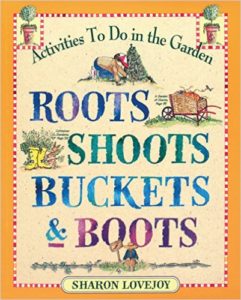
|
Sharon Lovejoy’s charmingly illustrated Roots, Shoots, Bucket and Boots (Workman Publishing, 1999) is a terrific collection of gardening activities for families and children. Included are how-to tips, a descriptive list of twenty particularly kid-friendly plants, and instructions for a range of theme gardens, among them a pizza patch, a moon garden, a flower maze, and a Zuni waffle garden. |
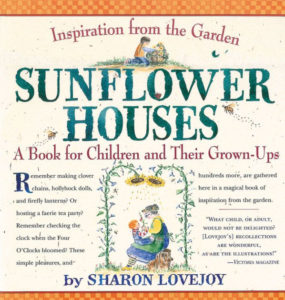
|
Sharon Lovejoy’s Sunflower Houses (Workman Publishing, 2001), subtitled “A Book for Children and Their Grownups,” is a compendium of garden projects, games, crafts, poems, and stories. Try growing a zucchini fish in a bottle or planting an abecedarium. |
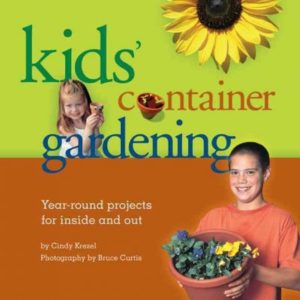
|
Kids’ Container Gardening by Cindy Krezel (Ball Publishing, 2010) is a collection of small-scale gardening projects targeted at ages 7-10, among them a Venus flytrap terrarium, a salad-bowl garden, an amaryllis pot, and a worm bin. |
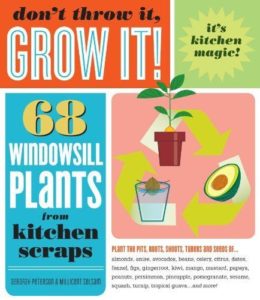
|
No room for a garden? Don’t Throw It, Grow It! by Deborah Peterson and Millicent Selsam (Storey Publishing, 2008) has instructions for growing 68 different windowsill plants from kitchen scraps. |
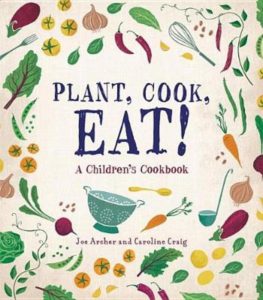
|
By Joe Archer and Caroline Craig, Plant, Cook, Eat (Charlesbridge, 2018) is a photo-illustrated garden-to-kitchen cookbook for ages 7-10. From planting instructions to recipes for bean burgers, polenta chips, potato pancakes, and chocolate beet cake. |
| From the National Gardening Association, Kids Gardening has dozens of categorized activities and lesson plans. Also at the website see Books in Bloom, a kids’ gardens-and-literature program. | |
| The My First Garden program from the University of Illinois Extension has kid-targeted background information, instructions, activities, and a teacher’s guide for planting a beginner’s garden. | |
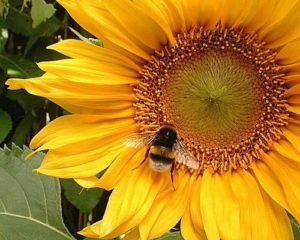 |
The Great Sunflower Project is an annual citizen-science project in which participants plant “bee-magnet” plants – such as sunflowers – and count the visiting bees. All ages welcome. |
| Life Lab is devoted to garden-based education, with resources, book lists, and other materials for teachers, parents, and kids. Included at the website are lesson plans, downloadable garden games, a chicken webcam, and a LifeLab store. | |
| The Junior Master Gardener program provides garden-based discovery education materials for grades 3-8. JMG membership is free, but instruction manuals must be purchased. Included are units on health and nutrition from the garden, literature in the garden, and wildlife gardening. The program also sponsors an annual Growing Good Kids book award. | |
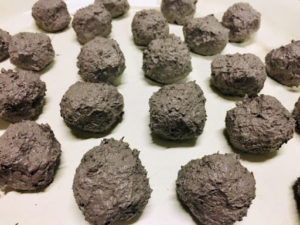 |
Guerilla Gardening has instructions for making several different kinds of “seed bombs,” used to disperse flower and vegetable seeds, Miss-Rumphius-style, to barren and neglected spots. A great project for all ages. |
| Also see illustrated instructions for How to Make a Seed Bomb. | |
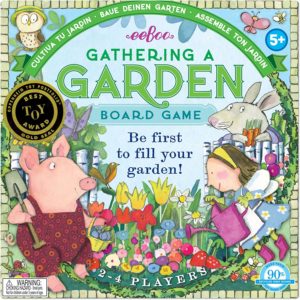 |
Gathering A Garden (eeBoo) is a beautifully illustrated board game in which players travel a flagstone path collecting flowers, fruit trees, vegetables, herbs, and birds to furnish their gardens. For 2-4 players ages 5 and up. |
